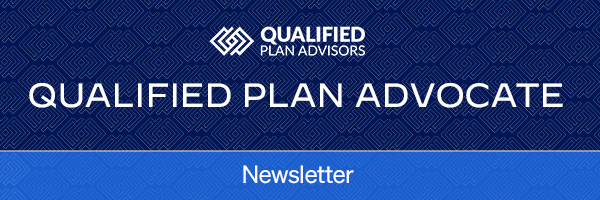Plan Corrections: SECURE Act 2.0 Provides Additional Tools
The SECURE Act 2.0 of 2022 provides plan sponsors with a number of additional tools to enhance the attractiveness and effectiveness of their retirement plans. Over the next couple of years, employers will begin to match student loan debt repayments, participants will be able to easily build in-plan emergency savings accounts, and participants may elect for their employers’ contributions to be made on a Roth basis. Following a meeting with IRS and Treasury officials in early February, we’ll share more about forthcoming guidance that will influence how we implement those enhancements.
In the meantime, plan corrections season is upon us. There are a number of reasons that employers are digging into their plan documents and payroll processes to ensure their plans are operating correctly. Whether it’s the early discovery of excess contributions from 2022, the implementation of annual increases, the untimely implementation of new employee elections, hiccups from changes in HRIS or payroll systems, or just the general sense that the plan auditor is lurking around the corner, well, employers have a lot on their hands.
Fortunately, SECURE 2.0 provides some operational corrections guidance that adds to the IRS’s already growing and helpful list of fix-it tools. This month’s newsletter will provide a rough framework as plan sponsors begin to navigate the errors and corresponding corrective options.
The Formal Starting Point: EPCRS. For the longest time, the IRS has set forth its plan correction rules through its “Employee Plans Compliance Resolution System” or “EPCRS”. It updates EPCRS from time to time and most recently did so in Revenue Procedure 2021-30, a 140-page labyrinth of corrective principles, examples, and limitations. EPCRS includes three primary channels for correction:
(1) Voluntary Correction Program or “VCP”, which involves an application to the IRS and a corresponding fee;
(2) Self Correction Program or “SCP”, which does not require an application or corresponding fee; this is where everyone would like to be, but there are limitations on its availability; and
(3) Audit Closing Agreement Program or “Audit CAP”: working together with the IRS after it’s found errors; this is not where everyone wants to be.
Over the last decade, the IRS has expanded and reformed EPCRS in a demonstrated effort to make it easier to correct errors.
The Less-Formal Starting Point: IRS Fix-It Guides. Perhaps the best evidence of the IRS’s efforts is its “401(k) Plan Fix-It Guide.” Yes, the seemingly formal IRS maintains a “Fix-It Guide” website that identifies 12 common mistakes and sets out steps for correcting and avoiding those mistakes. The Guide provides for the practical application of EPCRS principles and essentially reflects the IRS’s view on “best practices”. This is a great starting point upon the discovery of errors.
Recent Helpful Developments. Over the last few years, the IRS has modified EPCRS to provide help in two key areas. First, it has provided less expensive options for correcting “missed deferral opportunities” that arise when a plan sponsor failed to appropriately honor a participant’s deferral election, whether made proactively or via automatic enrollment. Congress and the IRS believe automatic enrollment and automatic escalation are critical components of a successful plan. The IRS relaxed its corrective rules with the primary goal of encouraging plan sponsors to implement those automatic features (and to avoid freaking out when things don’t go perfectly).
Second, it has expanded SCP – the corrective program that doesn’t require an application and fee. Many times, operational failures benefit participants. Instead of unwinding those errors, plan sponsors frequently prefer to retroactively amend the plan so the “paper matches the practice”. Until the last few years, a retroactive amendment was available only through VCP, which does require the application and fee. The IRS has reversed that position, though, and provided a framework that permits employers to easily adopt retroactive amendments in far more areas.
SECURE 2.0. The recent legislation will expand the availability of SCP. Prior law distinguished between “significant” and “insignificant” failures, and imposed time limitations on the ability to self-correct any “significant” failure. It also excluded certain plan loan errors from SCP eligibility.
SECURE 2.0 will relax those restrictions in the following ways:
(1) permitting SCP for any “eligible inadvertent failure”, which is one that occurs despite the existence of practices and procedures that are reasonably designed to promote and facilitate compliance with Tax Code requirements;
(2) removing any specific deadline for self-correcting failures, no longer distinguishing between those that might be significant or insignificant;
(3) expanding the ability to correct while under an IRS examination; and
(4) providing greater opportunities to self-correct plan loan failures.
Fiduciary 15 Webinar. Please take a moment to register for this month’s Fiduciary 15 webinar, where we’ll expand on this Newsletter and address the following issues that should be relevant for all plan sponsors:
(1) recapping the structure and helpfulness of EPCRS and the Fix-It Guide;
(2) diving into the framework for thinking through any issues relating to missed employee contributions and how to accomplish the corrections; and
(3) addressing the SECURE 2.0 provisions relaxing Tax Code and fiduciary issues relating to the correction of overpayments made to participants.
Many are surprised to learn just how hard the IRS has worked to encourage plan sponsors to be vigilant in identifying and correcting plan errors. SECURE 2.0 is another step toward easier and cheaper correction. We’re here to help you through that process.
– Matthew Eickman, J.D., AIF®

